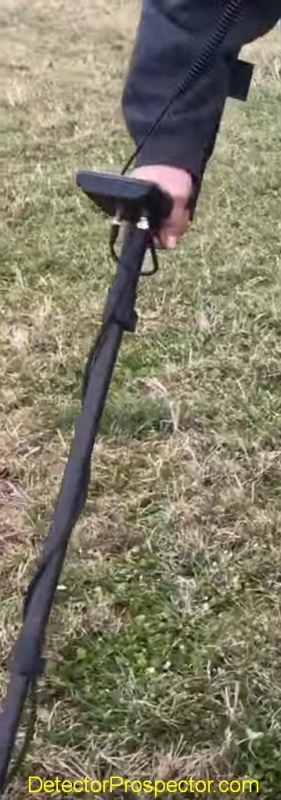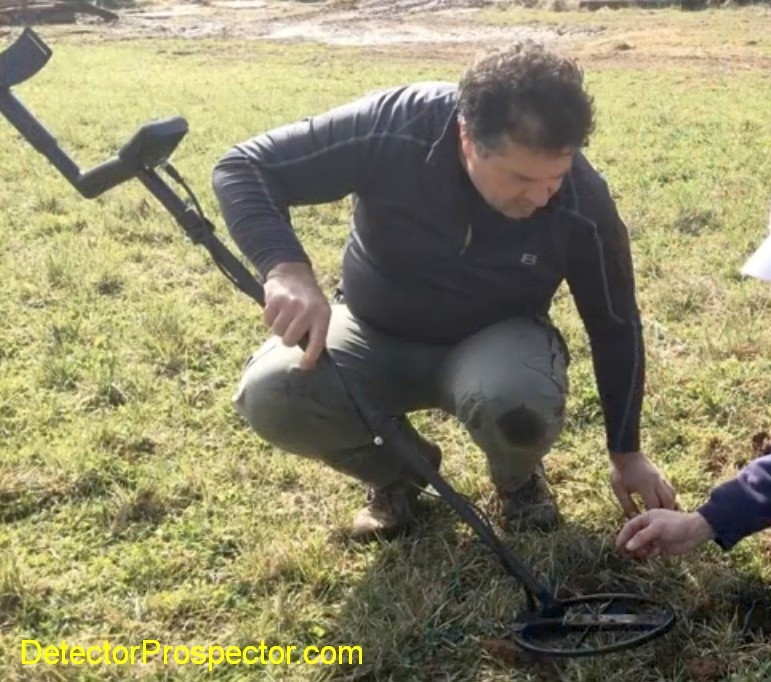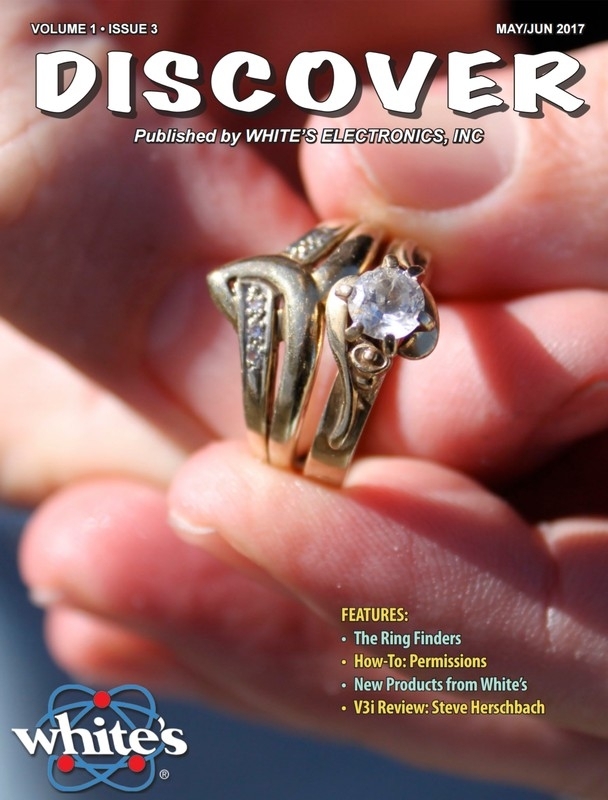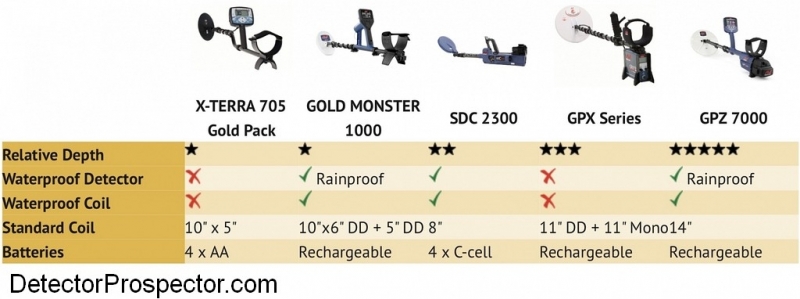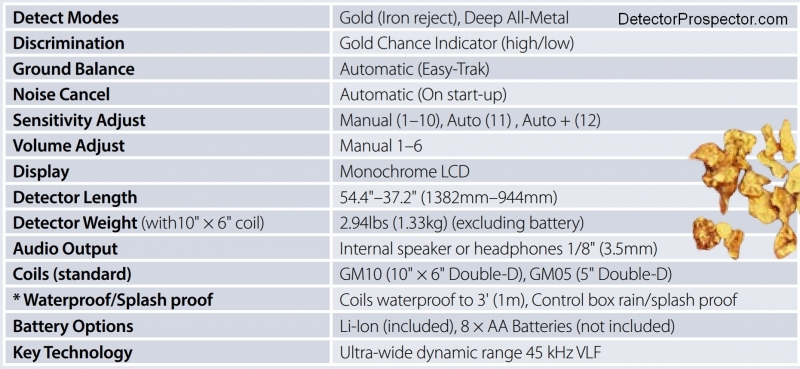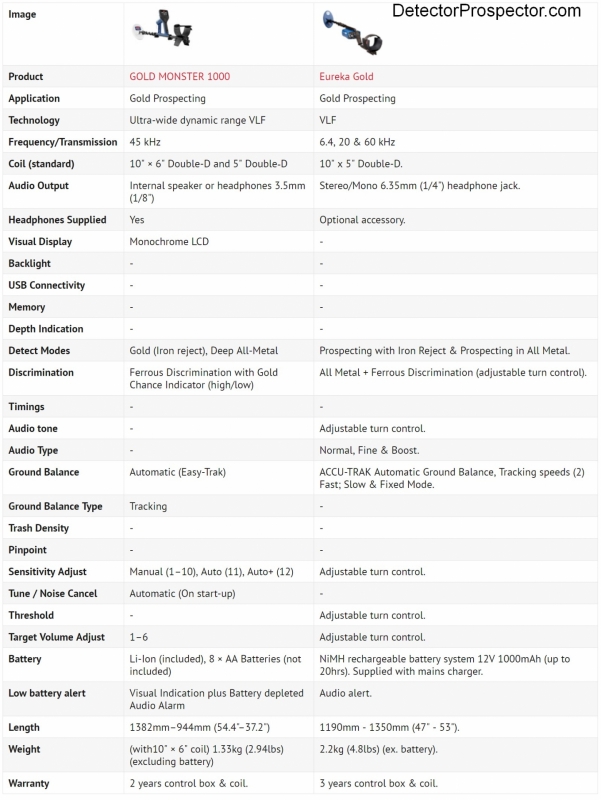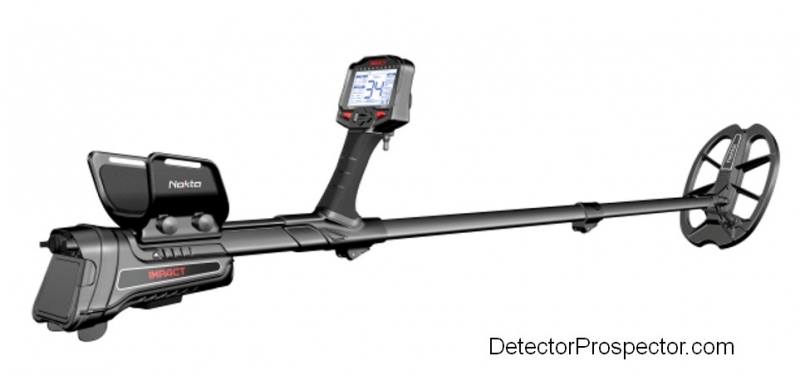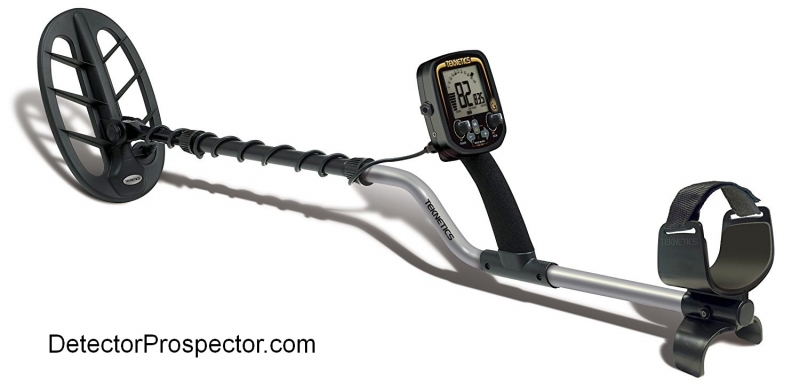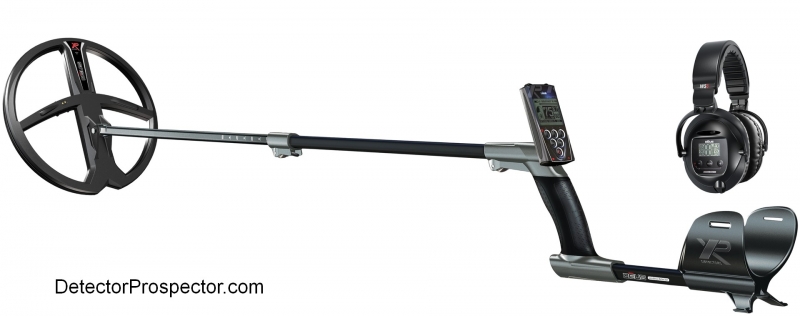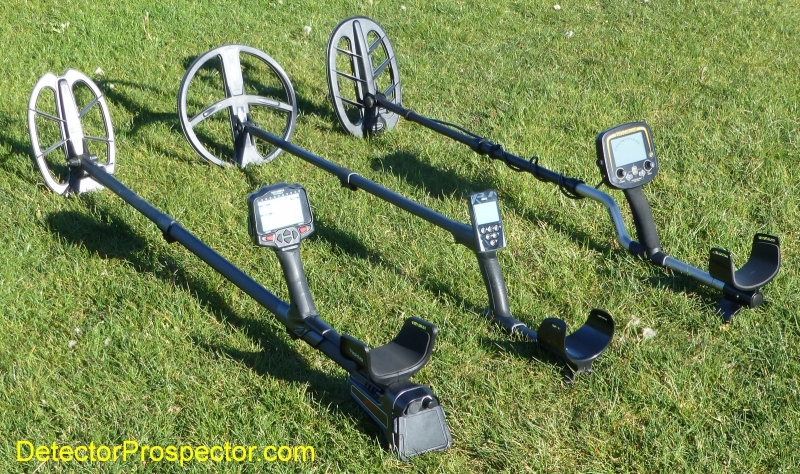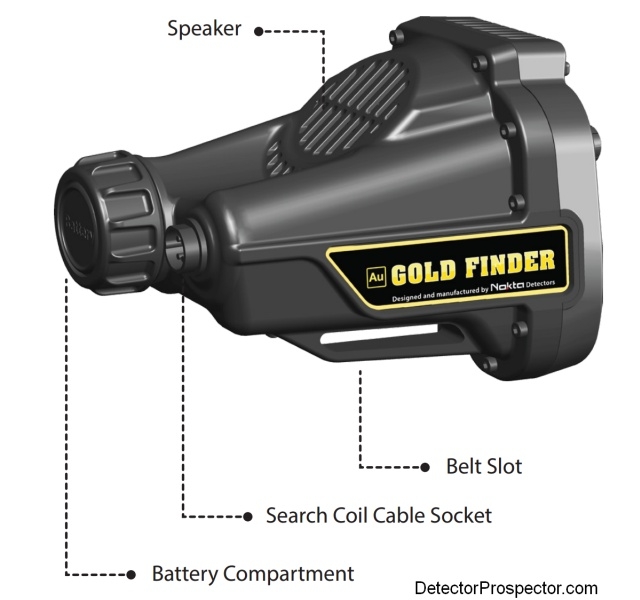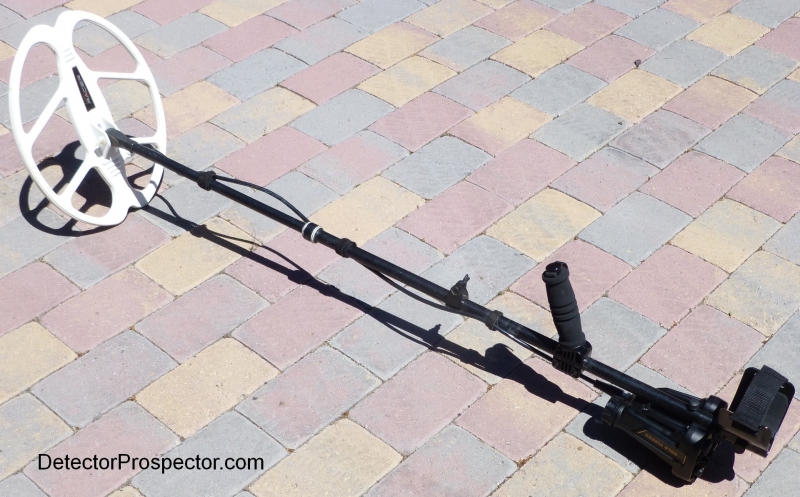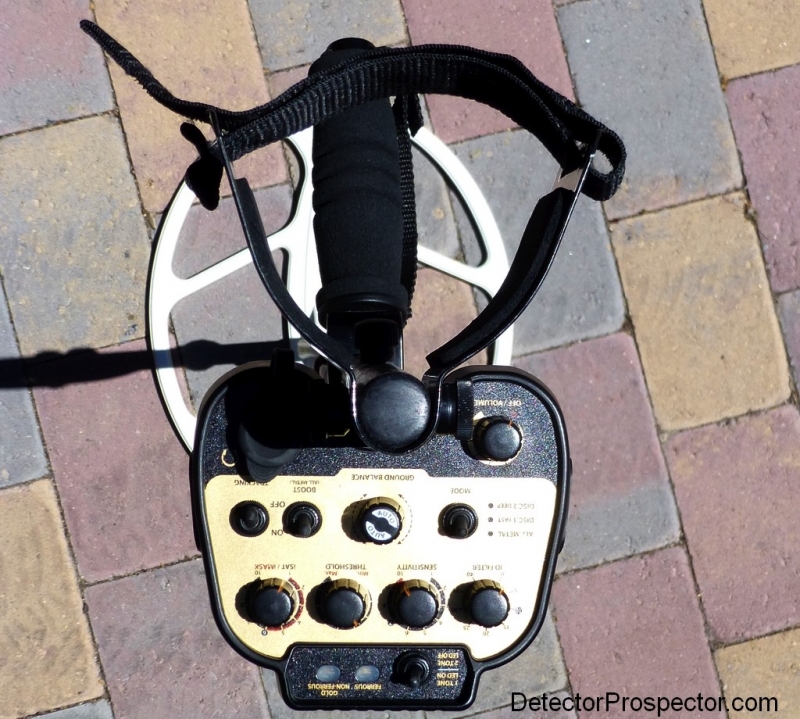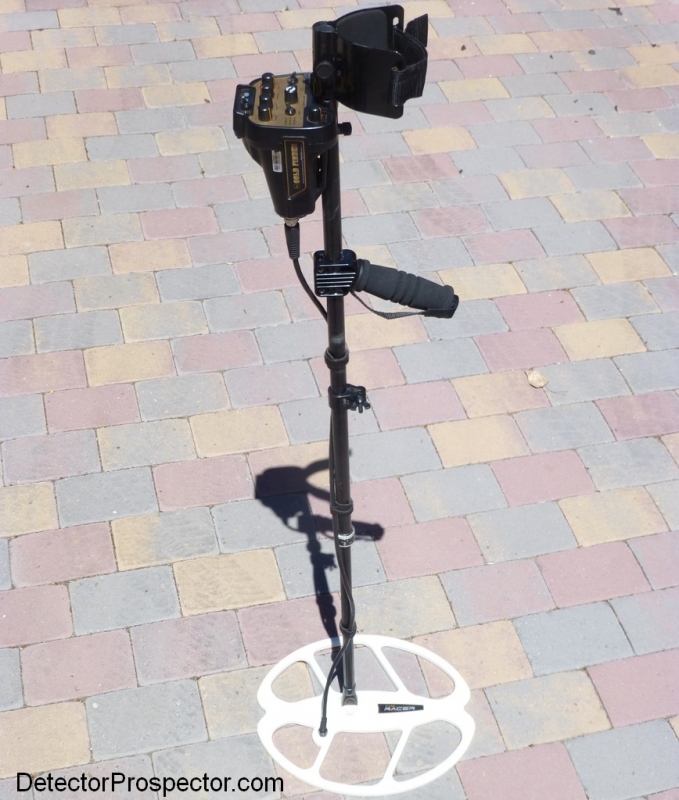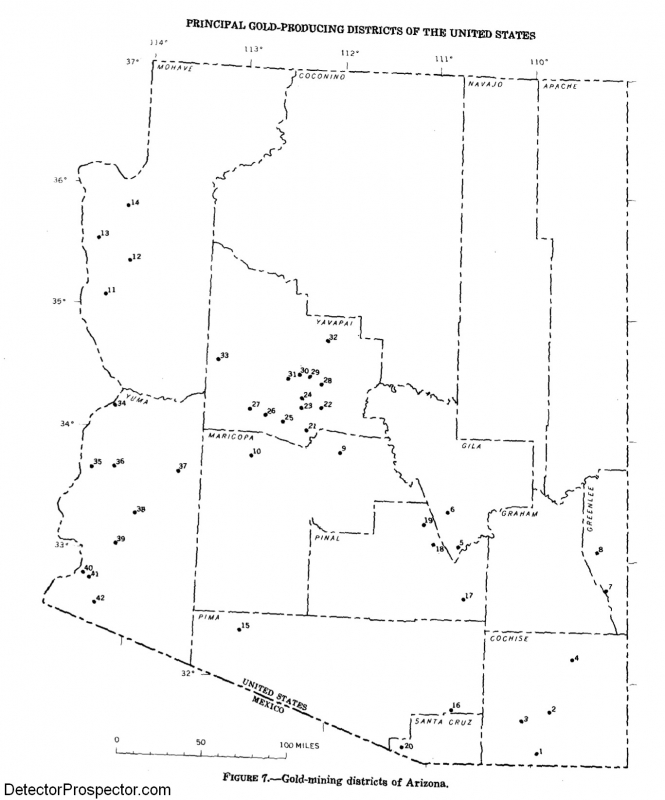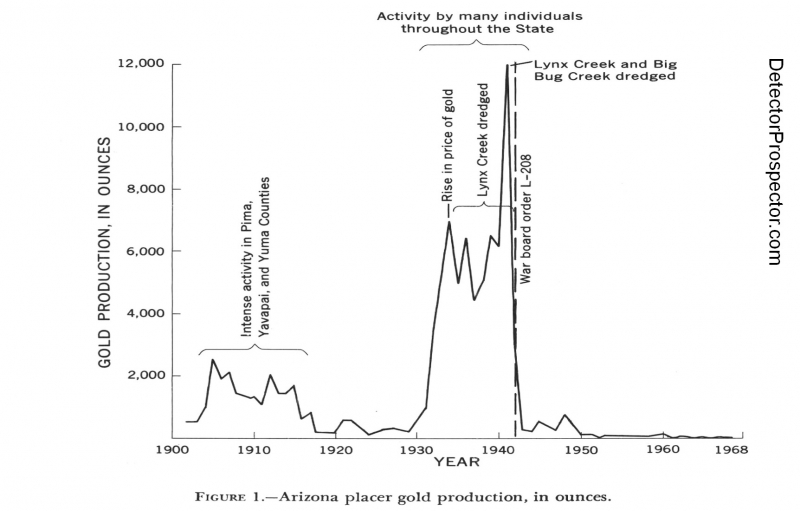-
Posts
19,796 -
Joined
Content Type
Forums
Detector Prospector Home
Detector Database
Downloads
Everything posted by Steve Herschbach
-

The New Garrett Is Finally Coming!
Steve Herschbach replied to Steve Herschbach's topic in Garrett Metal Detectors
Well, just to keep the rumor mill going there is this video featuring Bill Ladd. At the 2:07 mark he mentions prototype detectors are present. And at the 3:35 to 3:45 stretch and at 13:30 we get a few looks at what appears to be a new waterproof detector with a new coil design. This may of my not be the detector in question of course, and even if it is the look of things like coils especially can change in the final product. So a couple screen shots first followed by the video itself. Remember, more information is due this Friday - who knows how long after that before the detector will actually be available. -
You are killing me in the gold department Chris - I am off to a record slow start this year. Just too much else going on. So keep it up - I love seeing pictures of gold if I can't see it myself!
-
Discover Magazine Some of you might remember a publication called "Discover" that White's Electronics used to publish. It featured customer finds, treasure stories, and all-around good info on metal detecting. Back in the 90's we stopped making it, much to the disappointment of some of our long-time customers. Well... we realized missed it too! So we're proud to announce the re-introduction of Discover magazine. As a part of our mailing list you have exclusive access to a free digital copy, which you can read online, print out, and share as you see fit. Get your free copy here. We'll try and send one out every 2 months. Thanks for supporting an American brand, and know that we will always have your back as a valued customer. This publication is just one small thing we can do to show our appreciation! Discover Magazine May/June 2017 Discover Magazine March/April 2017 Discover Magazine January/February 2017 Sincerely, White's Electronics
-

How To Make Yourself Crazy!
Steve Herschbach replied to Steve Herschbach's topic in Metal Detector Advice & Comparisons
On the subject of efficiency. I am a prospector first and foremost. I spend 90% of my actual hours metal detecting looking for gold nuggets. What do I use? No nugget detector is perfect for all detecting in all locations. Unlike coin detecting the gold varies by mining district, and so what works well in a large nugget district does not work well where no gold can be found larger than a pinhead. I do chase larger gold but want as much small stuff as I can find at the same time. So I normally swing a GPZ 7000 with 14" coil as the machine with the best response on the largest range of gold targets. In an area with flyspeck gold I might have to break out a Gold Bug 2 with 6" coil to get the job done. And for big deep gold a 19" coil might have to get put on the GPZ. But for the vast majority of the hours I have to just choose a machine to use and the GPZ 7000 with 14" is the most efficient use of my time. No matter what however, I may miss small nuggets my Gold Bug 2 would hit or big deep nuggets the 19" coil would have hit. The same thing goes I think for coin or jewelry or relic hunting. There is no perfect detector, and the best of the best are all so good it really will drive you crazy if you think you can find one that clearly rules on all targets under all situations. At the end of the day we have to pick one detector with one coil we are going to use today for whatever we do, and all the factors that go into making that choice mean each detector will always have plenty of fans convinced their detector is "the best".- 20 replies
-
- nokta impact
- xp deus
-
(and 1 more)
Tagged with:
-

How To Make Yourself Crazy!
Steve Herschbach replied to Steve Herschbach's topic in Metal Detector Advice & Comparisons
I was running the Target ID Depth setting at the default Intermediate (Medium) setting. Warning - another Steve ramble.... I want to note I am not at this point trying to push the units to the max, with the exception of the G2, where max is just the default mode. I am not really trying to determine anything in particular for anyone but myself, which is why I rarely post about these sorts of comparative tests that I am always doing. In particular I do not claim to be some sort of whiz bang fantastic coin and relic detectorist. I have a more casual approach and what I find time and again is that for me personally over analyzing targets is a waste of my time. If I am that unsure of the target I will normally just dig it. I want a machine that feels good and sounds good and that basically just delivers some sort of "dig me" response with a minimum of fuss. When doing tests like this I "Mode Flip" a lot looking for modes or settings that work best for me. As a general observation each mode detects the target, but just delivers different visual and audio results. I find it true time after time that if faced with machines with lots of modes, I settle eventually into just one or two modes for two specific types of hunting I do, and all the rest of the modes end up getting ignored. The best example I can think of is the MXT with its Coin & Jewelry Mode, Relic Mode, and Prospecting Mode. In general if you do lots of cross checking you will find the MXT will see almost all targets just as well in any of the three modes. All that changes is the way the audio works and the meter responses change to match the mode. In the end you settle on the mode that just works the way you like best for what you do most. For me on the MXT the Relic Mode pushed all the right buttons and I almost never used the other two modes. My F75 spent nearly all its time in Boost All Metal. You face a similar issue as regards the Impact or Deus. What mode or modes work best for you personally? What I see are two scenarios. I mostly just want to hunt, get a target, recover it, and move on. Efficiency is the name of the game. Getting the ultimate in depth may not be the best idea for this type of hunting, just overall separation and clean signaling. Then there is down and dirty pounding some specific spot at a crawl trying to eke that one last great find out of the ground. This often requires a totally different setup and frame of mind. I spend most of my time covering ground and recovering targets. I count hours and ground covered as more important than another 1/2" for the majority of my detecting. So for me personally I am seeking what for me is the most efficient detector, not necessarily the deepest. Yet for specific site/patch pounding maximum depth and/or target separation are all important, and so that does also factor into what I am doing. That is where I end up with one mode I use 90% of the time, my "hunt mode", and then a mode for those times I am pounding a location, a "patch killer mode". I have to admit that coin detecting for me and gold prospecting are just different. When nugget detecting it is generally just dig it all detecting, and so all that matters is pure horsepower. It makes choosing detectors pretty easy, with clear differences observable in the field. Toss in trying to discriminate modern mixed trash in your average park setting however, and a whole different thing happens. First, I am doing it less for a pound of gold and more just to have fun. Swinging a GPZ 7000 is not what you do just to have fun. Coin detecting in a park however I am just having fun, and so the choice of detector for me does tend to be more about which one enhances the fun factor. And since I jewelry hunt more than coin detect, there is a good chance I will just fall back into digging all non-ferrous targets anyway. It was kind of bugging me chasing just coins yesterday while passing on lots of what were clearly aluminum targets - except they may have been gold!- 20 replies
-
- nokta impact
- xp deus
-
(and 1 more)
Tagged with:
-
A very detailed review of the Gold Monster 1000 by Kevin Hoagland. Kevin is the Executive Director of Development for the GPAA and LDMA and a superb detectorist. Really well done - Kevin gets kudos from me on this effort and I think I will study it carefully for tips on how to improve my own reviews. "If you are in the market for your first detector, the Minelab Gold Monster 1000 should be on your short list. Minelab has created a simple to use detector that performs well above its claimed “entry level.” For the seasoned detectorist, it is worth a hard look. You may feel that it lacks some of the functionality that you are used to, yet I think that you will be completely surprised with the Gold Monster 1000’s overall performance." Full review at http://www.goldprospectors.org/News/News-Details/ArtMID/3269/ArticleID/201/A-Field-Test-MINELAB-GOLD-MONSTER-1000 Click images below for larger versions.
-

How To Make Yourself Crazy!
Steve Herschbach replied to Steve Herschbach's topic in Metal Detector Advice & Comparisons
I have a theory that bad ground essentially removes what small differences exist between most VLF detectors. My ground cuts depth approximately in half compared to Florida soil for instance. So a dime there at 11", which is approaching air test type depths, only makes it to 6" here before turning into a ferrous reading. So I air test the Impact, for example, against the G2 and see a solid 1/2" advantage on a dime. But in the ground that advantage compresses to only 1/4" which is actually almost nothing. I mean, if I go over ground with a machine that goes to 6", and come along with another that goes to 6-1/4 inches, don't expect the coins to just leap out of the ground. And the reality in nearly all the cross testing I do is that the differences compress to almost nothing at all. It is real hard to find a single frequency VLF that really "goes deeper" than the best of what we already have. One might get me thinking I have it on one target, but then the situation will reverse on a different target. Nugget hunting and hunting in a carpet of nails are a bit different, but for park style coin detecting there are a pile of single frequency machines that will serve just as well as another. The tech really is maxed out, and most all the difference I think we see out there says more about the operators than the detectors.- 20 replies
-
- nokta impact
- xp deus
-
(and 1 more)
Tagged with:
-

Gold Lake Area Update
Steve Herschbach replied to Sourdough Scott's topic in Detector Prospector Forum
They are actually talking about some of the ski resorts staying open all summer! -
Some random notes, and if you don't know what I am talking about as regards some detail of this machine or that I apologize. Well, I finally updated my XP Deus with 11" coil to the version 4 update. Then I hauled it and the Nokta Impact with 11" and Teknetics G2 with 11" out for several hours of cross checking coin type targets. The G2 is a Gold Bug Pro variant running at 19 kHz and I put it up against the Deus at 18 kHz and Impact at 20 kHz. I acquired the G2 new recently to use specifically as a benchmark unit because I am very familiar with it and because in my opinion it does 19 kHz as well as it can be done. I spent hours swapping machines as the hunt machine, then cross checking the undug targets with the other two. Lots of settings tried, with the main goal to try and find some deep fringe type target or target in trash where any machine can get a clear and definable edge. Well good luck with that. All I mainly did was impress myself again with what a little powerhouse the Gold Bug Pro/G2 is for the price. It is fairly mineralized ground but not the worst, 5 bars out of 7 on the G2 Fe3O4 meter, ground balance about 86. The only real "aha" moment was in learning the Impact really likes to upscale shallow small foil when in 5 kHz mode, but shoves the id back down to where it should be at 14 kHz or 20 kHz. All the machines like to upscale deeper aluminum in this ground. All three seemed to get tricked in much the same way on certain targets, like a deep pull tab reading like a dime. For gold hunting purposes I do not mind machines upscaling low conductive targets, and in fact the Impact 5khz mode may have a benefit in nugget detecting because it does want to push light foil (and therefore small gold) higher. But for coin detecting upscaling aluminum is annoying. Pretty much par for the course however for mid to higher single frequency machines. I found running the Impact in VLX1 was nice as I could flip over just one click to the Gen(D) mixed mode program for a dramatically different read and better target definition. Target id numbers in my ground are slightly higher in the "expanded ferrous" modes like VLX1 and VLX2 compared to DI3 and DI4. The Deus V4 Gold Field program does seem to pack some extra punch now, be fun to get it out nugget hunting once the elliptical coil hits the streets. The new Deep mode really seems great while the new Hot mode is, shall I say it, interesting. First time I have used the X-Y screens also. The G2 is what it is, almost no controls but it gets the job done with what it has, and good solid id. Deus and Impact in the other hand have countless options and programs to try, but by and large there is no magic bullet. Three great machines, I can hunt with any of them. It will take a lot more hours to sort it all out. I find when running machines that are all hitting the VLF Wall that it is the "other things" that get my notice. The Impact is obviously the heavier of the three (4 lbs 4.7 oz / 1946 grams), although very well balanced, so I give the feel on my arm award to the G2 (3 lbs 1.5 oz / 1404 grams) and the Deus (2 lbs 4.0 oz / 1020 grams with 11" coil and control box). The G2 and Deus are neck and neck in the comfort department FOR ME* but the G2 feels ever so slightly better to me, I am guessing because the coil is lighter on the G2. The G2 slays both the Impact and Deus for speaker volume if run without headphones, but on the other hand it has no volume control so would be too loud for some situations. Been awhile since I ran a Gold Bug Pro / G2 unit and caught myself when switching from disc mode to all metal when cross checking at one point and forgetting that the "big number" changes from target id in disc mode to ground phase in all metal mode, so I was looking at the ground phase instead of the little speedometer thinking it was target id for a couple goes. That one quirk always had me liking the F75 versus the Bug in all metal. I wish Fisher made a 19 kHz F75! *On arm comfort is a very subjective subject. In particular it has a great deal to do with the size of a persons hands plus length and thickness of their forearm, and their height. You really can't take any one persons word on this subject as it is like buying hiking boots. What fits one person does not fit another. It is not all about detector weight by a long shot. Balance is very important as is the all important hand grip. I am 5' 11" with forearms on the thinner side and smallish hands. For instance, my forearm really bounces around in the large Impact armrest area. The Deus armrest which may be too small for some fits me better. For me personally, the 3.5 lb Teknetics T2 / Fisher F75 is the most comfortable detector I have ever used. It is superbly balanced and something about the hand grip that narrows to the top as it cants forward really makes my hand happy. I can squeeze the armrest shut to fit my arm. So if you find the F75 to be a great fit for you, my comments apply to you. If you hate the T2/F75 setup then what I have to say is less important.
- 20 replies
-
- nokta impact
- xp deus
-
(and 1 more)
Tagged with:
-
Equating complexity with power is not always be true. I see no value in complexity for complexity sake. Give me a detector with an on/off knob that outperforms everything else and I want it. The key is getting the performance and if that can be done without sixteen interacting settings, all the better.
-
Well, from a technical perspective and just my own personal opinion, no new induction balance metal detector without a new patent number attached is going to be able to find objects that can't possibly be found with some other existing VLF type model already on the market. That would however totally discount the value placed in features and how you can rearrange those features for a better user experience. Example - my old cell phone made phone calls as well as my new cell phone. But my new cell phone has some usability features that make me prefer it over my old cell phone. The key thing I would focus on with the Gold Monster 1000 is the potential of a higher frequency induction balance detector coupled with Minelabs state of the art ground tracking technology. High frequency machines are more responsive to hot ground and hot rocks and generally require more expertise to operate in tough conditions. The GM1000 is aimed at total novice detectorists with the goal of making them able to achieve professional level results with minimum effort. Here is the key marketing quote: "The GOLD MONSTER 1000 turns beginners into experts with fully automatic operation in an easy-to-use, high performance detector." Whether that appeals to you or not is up to you to decide. And at the risk of sounding flippant, it is a new toy. Lots of us like new toys!
-
So much for my memory then - just read it before and forgot. I wonder if in this age of microprocessor controlled metal detectors this means we will see one upmanship in marketing like with the old PC ads touting processor speed? White's V3i "The heart of VX3 is a high-performance ARM-9 RISC microprocessor..." Fisher Gold Bug Pro "Dual processors" Minelab CTX 3030 "Faster processor"
-
The DEUS has a fabulous feel in my hand. Just love the pistol grip on that rod - it certainly is not just your standard "S" rod. But that is mainly because no truly large coils exist for the Deus that it works. The problem is centered around large coils. Up to 11" coils balance is not that important, though it does figure. For instance, I would rather swing a 3.5 lb F75 than a 3.0 lb Gold Bug Pro with same size 11" Coil because the F75 is perfectly balanced, whereas the Gold Bug Pro is nose heavy. It is not enough to quibble over however. But when you start putting larger coils on a detector and total nose weight goes up, balance gets very important. Minelab was very aware of the with the original SD design which is still in use on the GPX because of the ability to properly balance large coils. For that same reason hip mounting control boxes and using large coils is not a great idea. You need the control box as a counterweight. I think more effort was put into the T2/F75 design from an ergonomics perspective than any other detector I know of. From https://www.tekneticst2.com/the-tek-files/question-and-answer-session-with-ft-fisher-engineers-david-johnson-and-john-gardiner DS: How difficult was it walking the line between superb ergonomics and weight vs. structural durability (on the T-2 and F-75)? Dave Johnson: "It took a lot of attention to detail. I was originally shooting for even lower weight. I’ve been studying the physiology of metal detector ergonomics for my whole career and on this product I had a blank check to get it right. There were things we had to do to get the ergonomics right that added weight. We were all betting that good ergonomics was more important than shaving every ounce, and the T2 and F75 proved us right. Nobody is saying we should have made it lighter." Dave is obviously proud of the work put into the original T2 ergonomics, later duplicated in the F75. It is reflected in the specs you see in the T2 manual: Weight: 3.5 pounds (1.6 kg) with alkaline batteries installed. Static Balance: force in vertical plane normal to elbow 0.47 pounds (0.22 kg). Varies with adjustment and user’s stance and arm/hand physiology. Dynamic Balance: axial moment, 0.29 foot-pounds (0.39 newton-meters). Varies with adjustment and user’s stance and arm/hand physiology. Sweep Effort: lateral moment 5.2 foot-pounds (7.1 newton-meters). Bottom line - I want detectors to be BOTH light in weight and properly balanced.
-

Garrett ATX Strip Down & Rebuild
Steve Herschbach replied to Steve Herschbach's topic in Garrett Metal Detectors
Well, the fact is any detector that ground balances has "holes" someplace. The ground signal range and gold signal range have a lot of overlap. Therefore anytime you tune out something by way of ground response you lose some gold along with the ground (or salt) response you tuned out. Dual channel systems do not eliminate this problem, but they do reduce it. The fact these "holes" exist is the basis for the different timings on a GPX. Each set is designed to eliminate certain ground signals while perhaps detecting gold another set of timings will miss. The GPZ itself is simply exploiting "holes" in the SD/GP/GPX ground rejection methodology to reveal gold those detectors are weak on or miss entirely. Ironically the ground balance hole is at once both the weakness and the strength of the TDI. The ground balance system really is just a type of discrimination system, and being able to easily and directly manipulate it is the one thing that makes the TDI truly fun to experiment with. People have grown very adept at manipulating the TDI ground balance system for various discrimination type purposes. It makes it especially useful for relic hunters. I have for decades made use of the fact that all detectors reject the ground in different ways, some by only small amounts, some by huge degrees. In simplest form this means being a contrarian. If, for instance, everyone is hitting a particular area with one model of detector, using something else may reveal targets they all miss. If everyone has fallen into the bad habit of using a certain timing on a GPX, using a different timing on the same ground may provide some surprises. All detectors have weakness that can be exploited by knowledgeable operators with other detectors. Anyone that thinks they own the one magic machine that does not leave gold behind is kidding themselves. The TDI and ATX are both detectors I have done my best to understand and use, and give a level of respect I think they deserve. I think competition is good, and these detectors serve many people well. At the same time both White's and Garrett have frustrated me in not appearing to have an interest in fully developing the possibilities of the respective models. It is quite ironic that TDI users literally begged for a waterproof TDI, but White's would never deliver it. Now I have that base covered with the ATX, but I obviously would love to see an ATX in a TDI box (with better coils), as I honestly believe it is the superior circuit design. Sigh. Maybe Nokta will show them both up! -
Hi Paul, You mean like the Golden Mask Universal Telescopic Handle? Yeah, I have one and considered it. The upper rod/armrest portion is short enough it would be a bit tight and the lower rod does not fit the coil well without spacers. Bottom line is I had the Otto rod anyway and it seemed a better fit. I am going to use the Golden mask possibly for a DEUS mod or more likely a Gold Bug 2 mod. The GM rod would work however but you would need to modify the armrest cup to allow room to get the control box all the way back. I actually would have went back farther with the control box on my rig if I could have but the coil cable is already at its limit. The coils that come with the Gold Finder have longer cables but they do not make the large coil specifically for the Gold Finder. The Gold Racer version has shorter cables. Somebody wanting to do this might be able to get Nokta to make them a coil with a longer cable. Hip mounting is not really an option for the large coil as is. I am sure a great shaft option can be had from Anderson Detector Shafts.
-
I have had a Nokta AU Gold Finder sitting around for some time. The Gold Finder is the same 56 kHz detector as the Makro Gold Racer, but stuck in an old school knobs and switches waterproof housing. As such it lacks a LCD display and therefore the ability to display target id information. In exchange you get a unit where the battereis are in the control box, so it can be hip or chest mounted. Or in this case, put onto an alternative shaft assembly. I have an old Otto fiberglass shaft for the Minelab PI detectors I kept when I sold off my last Minelab GPX. I was planning on using it for my Garrett ATX modification but I ended up using a White's "S" rod for that project. I also have a 15" x 13.5" DD coil for my Gold Racer that I really liked. The problem there is even though it is a very light 15" coil, it still makes the Gold Racer more nose heavy than I prefer. So Gold Finder sitting around and rod assembly sitting around - Bingo - it's mod time! Easiest job ever. Since the AU Gold Finder is already set up to hip mount, all I had to do is drill the Otto rod to mount the Gold Finder control box. I wanted to mount the control box under elbow for better balance. The controls look upside down when you do this but in reality when you are using the detector and go to make adjustments it works better that way looking down from topside. The AU Gold Finder box almost seems intended to be set up like this as it has a shelf over the LED lights that makes a nice footrest when the control box is flipped over. Since the box is waterproof no need to worry about speaker etc. getting wet or dirty - just hose it off. Came out very nice, only 4 pounds 2.1 ounces with batteries or 4.13 pounds, and way better balanced than the Gold Racer would be running the same coil. I can use a bungee if need be but at 4.13 pounds this weighs no more than many coils running smaller coils. Nice, I am keeping it permanently set up like this. Click on images for larger versions.
-

Bunch Of Nokta Impact Coin Digs Filmed
Steve Herschbach replied to Steve Herschbach's topic in Nokta / Makro Metal Detectors
In general getting out and using what you have makes more sense than trading detectors. Says the guy who gets new detectors all the time. Seriously though, if I spent less time trying out and testing new detectors and just focused on going detecting, my finds would increase considerably. The Racer 2 weighs almost exactly 3 lbs with batteries. The Nokta Impact with batteries weighs 4.26 lbs. The Impact is better balanced but there is no denying that extra one and a quarter pounds. The Racer 2 has a better screen /larger lettering for old eyes and the menu is easier to navigate. -
From Placer Gold Deposits of Arizona, USGS Bulletin 1355, By Maureen G. Johnson 1972 HISTORY OF PLACER MINING IN ARIZONA Arizona's placer-mining industry began in 1774, when Padre Manuel Lopez reportedly directed Papago Indians in mining the gold bearing gravels along the flanks of the Quijotoa Mountains, Pima County. Placer mining was active in that region from 1774 to 1849, when the discovery of gold in California apparently attracted many of the Mexican miners who worked the gravels (Stephens, 1884). Arizona was then part of Mexico, and little is known of the placer mining that probably was carried on in various parts of southern Arizona. Placers were probably worked in the Oro Blanco district, Santa Cruz County, and the Arivaca district, Pima County. The part of Arizona north of the Gila River was ceded to the United States in 1848, and the part of Arizona south of the Gila River, where most of the early placer mining occurred, was purchased in 1853. Placers were discovered in the 1850's in the Bagdad area, Yavapai County, and Chemuehuevis Mountains, Mohave County; but it was not until 1858, when placers were discovered by Colonel Jacob Snively at the north end of the Gila Mountains, Yuma County, that the first placer-mining rush in Arizona was precipitated. The early years of the 1860's saw the discovery of the famous placers at La Paz, Yuma County, and Rich Hill and Lynx Creek, Yavapai County; many smaller and less famous placer fields were discovered at that time. Photo: Early placer mining on Lynx Creek, near Prescott, AZ In the 1860's, Arizona was a relatively isolated and underpopulated territory, fraught with communication and travel difficulties, and beset by Indian problems. Placer mining was actively pursued throughout the territory, and some rich lode-gold mines were discovered and worked; but real news of Arizona mining was slow to filter out from the territory to the more populated areas in California and the East. The period from 1860 to 1880 is reported as the most active and productive period in placer mining, but because of poor communications, there is very little reliable information or production record. By 1900 most placer areas had been discovered, and many were nearly worked out. Placer mining continued intermittently during the early years of the 1900's. Many attempts were made in various parts of the State to mine placer gravels by drywashing machines, but it was not until the economic impetus of the depression that placer mining became active again in Arizona. During the years 1930-38, 95 different districts were credited with placer gold production, but many of these districts produced only a few ounces. After the boom of the 1930's, the war years of the 1940's were a setback to gold mining activity. War Production Board Order L-208 greatly restricted the development of gold mines; prospecting for and mining metals essential to the war effort was deemed more important than mining gold. Even more important, however, the economy of the 1940's encouraged work in offices, factories, and war industries for those not in military service, and as a result, many miners and prospectors left the gold fields and never returned. After 1942, placer production never again reached the heights of the 1930's or the peak production of the 1860's to 1880's. GOLD PRODUCTION FROM PLACER DEPOSITS The U.S. Bureau of Mines (1967, p.15) cites 500,000 troy ounces of placer gold produced in Arizona from 1792 to 1964. I estimate that placer gold production was at least 564,052 ounces. Districts of largest placer production were the Lynx Creek, Big Bug, and Weaver (Rich Hill) districts (Yavapai County), the Gila City (Dome), and La Paz district (Yuma County), and the Greaterville district (Pima County), all with estimated placer production of more than 25,000 ounces. Arizona has many small placer-mining districts (Plate 1) from which only a few ounces of gold has been recovered, mostly during the depression years of the 1930's. For most of these districts, little information other than production has been found. Major lode-gold districts in the State, except for the Bradshaw Mountains in Yavapai County, have had very little placer gold production. Most of the placer gold produced in the State of Arizona was recovered by tedious work on a small scale by individuals who used rockers, pans, sluices, and dry concentrators. In only a few districts have large-scale placer-mining operations been successful, although many attempts were made to use large dry-concentrating machines. The most successful large-scale operations have been in the Lynx Creek and the Big Bug districts, Yavapai County, where the presence of adequate supplies of water enabled large dredges to mine the gold bearing gravels. Among the largest and most profitable large-scale dry concentrating operations were those in the San Domingo Wash district, Maricopa County, in the Plomosa district, and at La Cholla placers, Yuma County; at Copper Basin, Yavapai County, the gravel was hauled to a central washing plant where wet methods of recovery were used. The total amount of placer gold recovered yearly in Arizona from 1900 to 1968 is graphed in figure 1, which also shows major contributors to the peak production. SUMMARY The ultimate source of detrital gold in placer deposits is, for the most part, gold-bearing lode deposits, which in Arizona are represented by veins in faults, fissures, and shear zones of various sizes. Most of the placer gold found in Arizona was derived from systems of small gold-quartz veinlets and stringers scattered throughout the bedrock of the adjacent mountain ranges; in only a few localities was the gold in large placer deposits derived from vein systems of sufficient size to encourage lode mining on a large scale. Small placers commonly occur near large gold lodes, but are generally not economic. The most productive gold veins are those formed during Laramide time, which occur in rocks of Precambrian to Laramide (Late Cretaceous and early Tertiary) age. Much gold has been recovered as a byproduct from copper and other base-metal ores. Since 1941 the large copper mines have been predominant in the production of lode gold (Wilson, 1962).
-

History Of Placer Mining In Nevada
Steve Herschbach replied to Steve Herschbach's topic in Rocks, Minerals, Gems & Geology
Updated original post to add production notes, summary, and improved graphic illustrating gold production. Links added to cited references. Just a comment. I find these reports that talk about gold produced up to 1970 to be somewhat more realistic for my purposes than reports incorporating later production data. Most new reports include production from modern mining that goes after the type of gold I can't find with a gold pan and metal detector. These old reports focus more on the older, richer deposits that are of more interest to the individual prospector. They also tend to be written more for the layman - the new reports like to show off the college educations of the writers. That said, these older reports all cut off between 1960 and 1970 and do not include the latest data. -
I don't want to give the impression Minelab compatible coils won't work on a TDI. Nearly all will, though you may have to advance the pulse delay to get them to operate without overload. The vast majority will work just fine. But some won't.
-

Bunch Of Nokta Impact Coin Digs Filmed
Steve Herschbach replied to Steve Herschbach's topic in Nokta / Makro Metal Detectors
A new written review... http://www.dankowskidetectors.com/discussions/read.php?2,125359,125496#msg-125496 -
OK Chuck, I just got my May issue of ICMJ's Prospecting & Mining Journal, and there, on pages 16 and 17, is a full color two page ad for the GM1000. With absolutely no new information that you did not already know. Well, unless they have not mentioned it uses a 24-bit signal processor. I don't recall seeing that before. But hey, it is a print ad!
-
I hate to bring this up but this all gets complicated by the fact that not all TDI detectors are the same, nor are all Minelab compatible coils the same. If you make a detector it has to pass within certain tolerances but there are variations. The same with coils. And as long as a coil is made for a specific detector you can be sure those two sets of tolerances align. Yet as manufacturers can tell you just building coils for a certain detector results in many rejects right off the production line. It is hard to do even for a machine you are planning on. Now take coils with tolerances assumed for one detector and put it on another. Frankly, you just don't know. If the tolerances both swing the right way you are probably going to be ok. If the tolerances go in opposite directions you may have a problem. One guy may report a certain Coiltek coil made for the Minelab GPX (or GP or SD) works just great on his TDI, and you get the same coil and put it on your TDI and it is very poor. The chances are very high that every combination of TDI and non-standard coil is going to vary quite a bit. And don't go expecting refunds for bad performance when you buy a coil made for one machine and put it on something else. I am not trying to be a bummer here, just being realistic and warning people that putting coils made for one machine on another is an experimental thing. It is best done with coils had cheap so you are not out much if it does not work out. I have put coils made for Fisher 13 kHz machines on Fisher 19 kHz machines and they seemed to work ok. What is not a great idea with PI detectors is usually a worse idea with VLF detectors. Here is what Dave Johnson (the designer) had to say on that subject.

